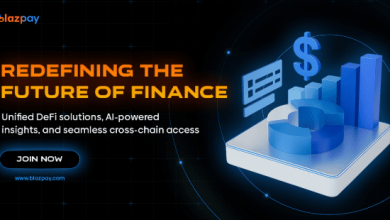Streamline Retirement with Pension Admin Software Now

In today’s complex financial landscape, effective retirement plan management is more critical than ever. Pension plan sponsors—from corporations and government entities to nonprofit organizations—seek robust solutions to administer defined benefit (DB) and defined contribution (DC) plans with accuracy, efficiency, and regulatory compliance. Pension administration software has emerged as the linchpin for delivering these goals, automating routine tasks, reducing errors, and providing deep insights into plan performance. This article explores the key features, benefits, and best practices for selecting pension administration software that empowers both administrators and plan participants.
The Evolving Need for Pension Administration Software
Historically, pension administration was heavily manual: paper forms, spreadsheets, and siloed systems. This legacy approach often led to delays, data inconsistencies, and compliance risks—especially as regulations such as ERISA, GDPR, and local fiduciary requirements became more stringent. At the same time, participants expect real-time access to their retirement savings and personalized guidance. Pension administration software addresses these needs by delivering:
- Centralized Data Management: A single source of truth for all plan data—participant records, contributions, investments, and benefit calculations.
- End-to-End Automation: Workflow engines that handle enrollments, payroll integrations, contribution processing, vesting schedules, and payout calculations.
- Regulatory Compliance: Rule-based engines that automatically apply plan rules, tax regulations, and reporting requirements, with audit trails for due diligence.
- Participant Self-Service: Portals and mobile apps where employees can view account balances, change deferral rates, and model retirement income scenarios.
By replacing fragmented processes with integrated, cloud-based platforms, sponsors gain greater control and visibility while participants enjoy a more transparent and engaging retirement experience.
Core Features to Look For
When evaluating pension administration software, certain features are non-negotiable for modern plan management:
- Flexible Plan Configuration
Organizations often manage multiple pension plans—DB, DC, hybrid, or cash balance plans—each with distinct rules. Leading software enables administrators to configure vesting schedules, contribution formulas, employer matches, and benefit accrual methods without custom coding.
- Automated Payroll Integration
Seamless interfaces with payroll systems ensure contributions and loans are processed accurately and on schedule. Real-time validation alerts administrators to discrepancies—such as late hires or contribution caps—before they impact participant accounts.
- Accurate Benefit Calculations
Whether calculating final average compensation for a DB plan or projecting DC account balances, reliability is paramount. The software must handle complex actuarial calculations, generate amortization and funding projections, and support “what-if” modeling for plan amendments.
- Compliance and Reporting
Automated generation of regulatory filings (Form 5500, PPF returns, local statutory reports) and custom ad hoc reports reduces manual effort and audit risk. Built-in compliance workflows track submission deadlines and validate data consistency across reports.
- Participant Engagement Tools
Modern retirement platforms include interactive dashboards, educational content, and decision-support calculators. These tools help participants make informed choices about contribution levels, investment allocations, and retirement income planning—ultimately improving plan outcomes and satisfaction.
- Security and Data Privacy
Given the sensitivity of personal and financial data, pension administration software must adhere to stringent security standards: end-to-end encryption, multi-factor authentication, and role-based access controls. Compliance with data privacy regulations (GDPR, CCPA) is also critical.
Benefits for Plan Sponsors and Participants
Improved Operational Efficiency
Automation of routine tasks—data collection, reconciliations, and reporting—frees plan administrators to focus on strategy, plan design, and participant education rather than administrative drudgery.
Reduced Errors and Audit Risk
Rule-driven engines enforce plan provisions and tax rules consistently. Any exception or data anomaly is flagged immediately, minimizing the chance of costly compliance failures or participant discontent.
Enhanced Participant Experience
Self-service portals and mobile apps deliver 24/7 access to account information, empowering participants to manage their retirement savings proactively. Engaged participants are likelier to contribute adequately and stay invested, boosting plan performance metrics.
Cost Savings
While implementing new software entails upfront investment, the long-term reduction in manual labor, paper handling, and error remediation can yield significant cost savings. Additionally, integrated platforms often replace multiple legacy systems, further reducing overhead.
Data-Driven Insights
Real-time analytics dashboards provide sponsors with visibility into key performance indicators—participation rates, average deferral percentages, investment elections, and projected plan liabilities. These insights inform strategic decisions, such as plan design changes or targeted education campaigns.
Selecting the Right Solution
Choosing the ideal pension administration software requires a structured approach:
- Define Requirements
Document your plan types, participant demographics, payroll systems, and compliance obligations. Clarify must-have versus nice-to-have features to focus vendor evaluations. - Assess Vendor Expertise
Look for providers with deep domain knowledge—experience supporting multiple plan types, strong actuarial partnerships, and a track record of successful implementations. - Evaluate Scalability and Flexibility
Ensure the platform can grow with your organization, accommodate new plan designs, and adapt to evolving regulatory landscapes without costly upgrades. - Consider Implementation and Support
A robust onboarding program—data migration, system configuration, and user training—is essential for a smooth transition. Post-go-live support (helpdesk, release management) ensures ongoing success. - Review Security and Compliance
Verify the vendor’s security certifications (ISO 27001, SOC 2) and data residency options. Ensure the platform’s reporting capabilities meet your jurisdiction’s regulatory requirements. - Check Total Cost of Ownership (TCO)
Compare licensing models (subscription vs. perpetual), implementation services, and ongoing maintenance fees. Factor in internal resource allocation and potential savings from process automation.
Future Trends in Pension Administration
As technology advances, pension administration software continues to evolve:
- Artificial Intelligence & Machine Learning: Automated anomaly detection, contribution forecasting, and personalized retirement recommendations powered by AI.
- Blockchain: Immutable ledgers for secure transaction records and streamlined plan auditing.
- Open APIs & Ecosystem Integration: Seamless connections with fintech apps, wealth platforms, and payroll vendors to deliver holistic financial wellness services.
- Enhanced Participant Experiences: Virtual reality or gamified education modules to boost engagement and financial literacy.
Conclusion
In an era defined by regulatory complexity and heightened participant expectations, pension administration software is no longer a luxury—it’s a strategic imperative. By centralizing data, automating workflows, and delivering rich participant experiences, modern platforms empower plan sponsors to manage risks, control costs, and drive retirement readiness. For participants, the ability to access their accounts anytime, make informed decisions, and see real-time projections cultivates confidence and engagement.
Investing in a robust pension administration solution lays the foundation for sustainable, compliant, and participant-centric retirement programs—delivering peace of mind for sponsors and a brighter financial future for participants alike.





